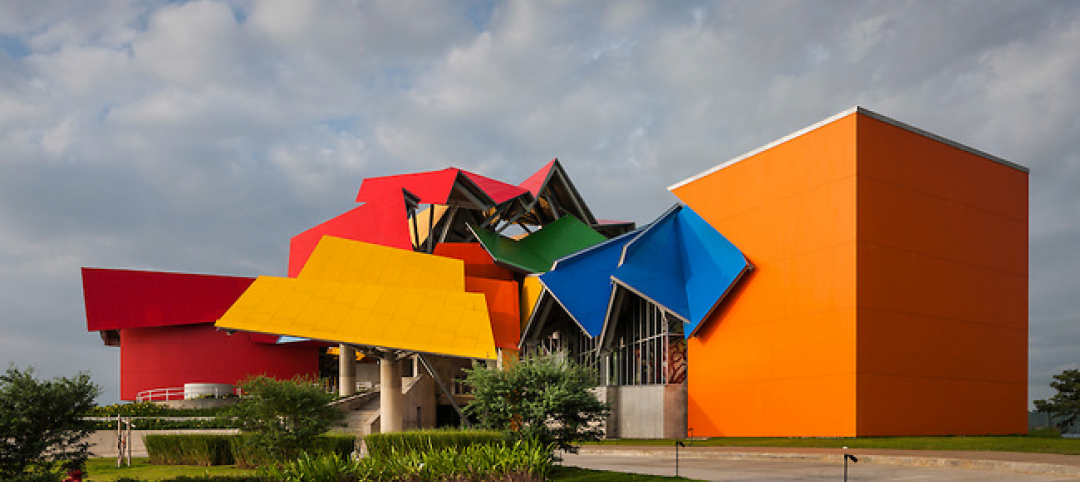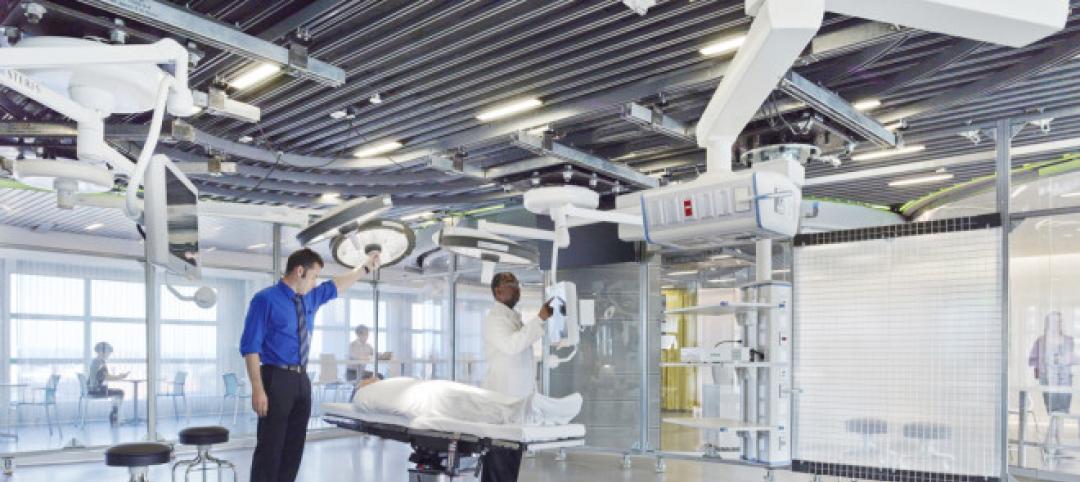Dissatisfied with the one-dimensional nature of defining energy efficiency as it relates to commercial buildings, international engineering firm Buro Happold developed a metric that links energy use to economic performance. The Building Economic Energy Coefficient (BEEC) could help many commercial building owners whose properties use a lot of energy (input), but add economic value to their cities and regions (output). This metric can also be a game changer that influences how local governments create policy to monitor the energy use of buildings.
(Download Buro Happold's white paper on the subject.)
Most systems of measurement deem a building efficient or inefficient based solely on how much energy it consumes. By contrast, BEEC measures a building’s energy use against economic performance indicators to give a more complete picture of a building’s productivity -- hence its overall efficiency. For example, a building might use less energy, but its tenants do not contribute as much to the regional economy. By this definition, another building that uses more energy might have an exponentially greater economic performance, making it more efficient.
When observed from this more comprehensive vantage point, some buildings that were previously thought of as energy hogs are revealed to be using energy more efficiently than many low-energy buildings. Buro Happold used proprietary research from CoStar Group to determine economic performance of commercial buildings in New York.
“Energy efficiency is framed in a very black-and-white way – either a building has low energy intensity or it is considered wasteful. With this research, we can now see whether or not commercial buildings are putting energy to good use. It allows us a much more nuanced and complete picture of what’s really going on with energy use,” said Steven Baumgartner, PE, CEM, HBDP, LEED AP, associate at Buro Happold, who led the research team, along with Jim Coleman and Amelia Aboff of Happold Consulting, Buro Happold’s strategic consulting arm.
City officials, building owners, and members of the AEC industry measure a building’s energy use on a per square foot, per year basis. This is known as its Energy Use Intensity (EUI). EUI is a very useful metric in determining a building’s performance but it only tells half of the story.
“Buro Happold has been a pioneer in sustainability for decades, and now we are intensively involved in the challenges of the 21st century,” said Craig Schwitter, PE, BSCE, MSCE, principal. “We are a multidisciplinary firm that brings a comprehensive approach to problems at multiple scales – from the individual building to the region. This groundbreaking research will have a major impact on the way that energy use is discussed and regulated as we meet the ongoing challenges of an increasingly complex world.”
BEEC data is currently limited to New York City commercial buildings. With more funding, Buro Happold hopes to expand the scope of the research to include more cities, and with greater detail. “This is a huge first step toward redefining energy efficiency,” added Baumgartner, “and we’re excited to take this research to the next level.”
Related Stories
| Sep 29, 2014
Snøhetta releases final plan for terraced central library in Calgary
The competition-winning New Central Library is now in the final design stages, after two years of community engagement on the part of design firms Snøhetta and DIALOG.
| Sep 25, 2014
Jean Nouvel unveils plans for National Art Museum of China
Of the design, Nouvel describes it as inspired by the simplicity of “a single brush stroke.”
Sponsored | | Sep 25, 2014
Your business doesn’t always need to change
By now, the idea that organizations must adapt to maintain both relevance and market share is so ingrained that it’s been reduced to pithy sayings. But is constant adaptation always the best policy? SPONSORED CONTENT
| Sep 25, 2014
Bjarke Ingels headed home for latest project: Aarhus Island
Aarhus Island will be a waterside development in Denmark's second-largest city. The mixed-use development will implement Ingels' signature angled look in its residential towers.
| Sep 24, 2014
Must see: Semi-submerged hotel planned for Qatar's man-made island
Plans for a new hotel in the Persian Gulf are taking Dubai’s Palm Islands concept to a whole new level—underwater, that is.
| Sep 24, 2014
5 business lessons from a 43-year Star veteran
Mary Ed Cain was supposed to be born a boy. That was the first time she surprised everyone. The second time came on a daily basis during her 43-year career at Star Building Systems. SPONSORED CONTENT
| Sep 24, 2014
Architecture billings see continued strength, led by institutional sector
On the heels of recording its strongest pace of growth since 2007, there continues to be an increasing level of demand for design services signaled in the latest Architecture Billings Index.
| Sep 24, 2014
Frank Gehry's first building in Latin America will host grand opening on Oct. 2
Gehry's design for the Biomuseo, or Museum of Biodiversity, draws inspiration from the site's natural and cultural surroundings, including local Panamaian tin roofs.
| Sep 23, 2014
Cedars-Sinai looks to streamline trauma care with first-of-its-kind OR360 simulation space
The breakthrough simulation center features moveable walls and a modular ceiling grid that allow doctors and military personnel to easily reconfigure the shape and size of the space.
| Sep 23, 2014
Third phase of New York’s High Line redevelopment opens
The $35 million Phase 3, known as High Line at the Rail Yards, broke ground September 20, 2012, and officially opened to the public on September 21.















